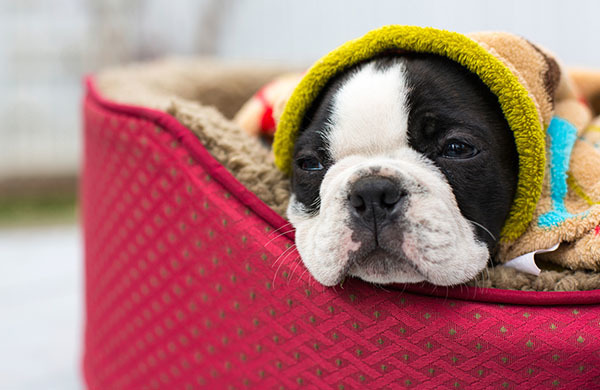
There are few things dogs do better than sleep. They're so good at it, in fact, they can doze off just about anywhere, whether that's sprawled out across your feet or curled up in a pile of dirty laundry. Much like humans, though, dogs feel a lot better when they sleep on a comfortable surface made specifically for them. This step-by-step guide helps you find the best dog beds for your pet based on its physical traits, habits, and specific needs.
Step 1: Size Your Dog

Measure him.
Do this when he's in his natural sleeping position. Starting from his front legs or nose (whichever extends furthest) to his back legs or rump. Add 8"–10" to your dog's measurements to determine the proper bed length or diameter.
Weigh him.
Large dog breeds 50 pounds and heavier (such as golden retrievers and German shepherds) require beds with thicker, denser cushioning. Cots are well-suited for Cujo-sized dogs that exceed 80 pounds.
Step 2: Match the Type of Dog Bed to Your Dog's Sleeping Style
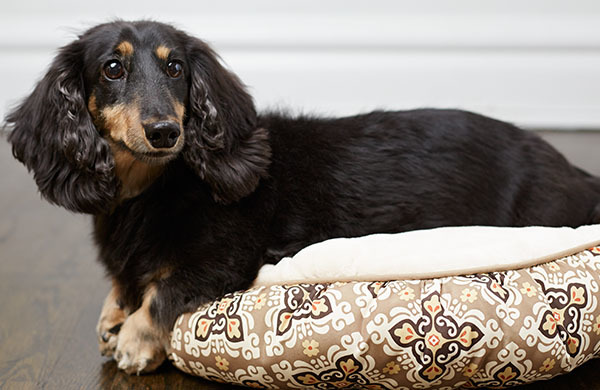
You'll need to find a bed size that'll give your pooch plenty of space to stretch its limbs. When in doubt, get a larger size. Avoid options with raised rims or edges that'll constrain your dog to the center of the bed. A standard mat, pillow, or cushion bed are easy options.
A nest or bolster bed for the curler or the head rester
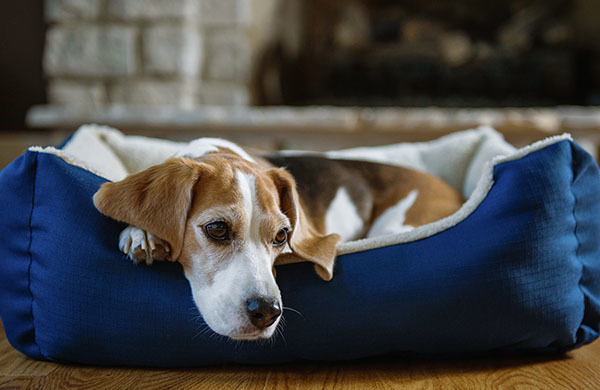
Dogs who snooze in a curled-up ball don't require as much real estate as dogs who stretch out, which should open up more options as far as bed size and style. Nest and bolster beds are a good choice, because they have raised edges that'll feel like a warm hug to your curled-up pup. Just like dogs who curl up, dogs who like to put their heads on pillows or armrests will benefit from nest and bolster beds. These beds' raised edges provide a soft, supportive surface that dogs will love to rest their furry heads on.
A cave bed for the burrower

Cave beds are similar to nest and bolster beds, but they include a hood that hangs over your dog to make it feel safe and secure as it snuggles in.
A mattress for the belly-upper

If your dog routinely sleeps on its back, then it'll need a firm but soft mattress that provides comfortable spine support.
Step 3: Consider Your Dog's Special Needs
Find features that keep them happy and comfortable.
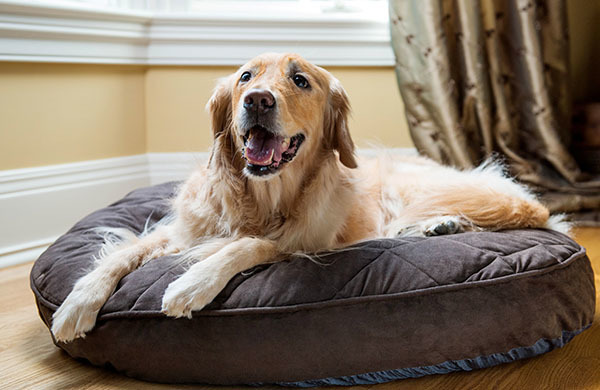 An orthopedic bed for older dogs or those with joint pain
An orthopedic bed for older dogs or those with joint pain
Flat, ultra-supportive orthopedic pet beds are well-suited for canines with arthritis or hip dysplasia. They're usually made of thick memory foam that'll ease pressure on your dog's sore joints, as well as block the sometimes bothersome temperature of the floor. At the very least, select a bed with thick padding, and avoid all raised beds that require your dog to climb or jump onto them.
Look for a waterproof pet bed with a removable cover or liner that will protect the bed's stuffing when your dog has an accident. Simply toss the cover in the wash when it needs to be cleaned.
You may also consider a specially designed bed such as the patented Sleepee Time Bed—a multi-layered system with vinyl-coated polyester mesh that allows urine to easily pass through the mattress and into a sturdy bottom tray. The bed also includes bolsters topped with a fleece-like material that's designed to keep your dog's fur and skin dry and prevent discomfort or irritation.
A heated bed for dogs who run cold
It's common for small or short-haired dog breeds, such as chihuahuas or miniature pinchers, to constantly shiver from the cold. If your pup's teeth are always chattering, look for an ultra-plush, insulated bed with a generous amount of warm filling, such as polyester or cotton. You can also seek out heated pet beds that function similarly to an electric blanket (though these aren't suitable for dogs with chewing habits, as the power cord can be a hazard).
A cot or gel-filled bed for dogs who overheat
If your dog has a thick coat and you're looking for a traditional indoor bed, make sure to avoid super-plush options that retain a lot of heat. A pet cot with a raised surface might also be a good choice, because it'll allow cool air to circulate under your dog as it sleeps. If your dog spends a lot of time basking in the sun, a plastic cooling pet bed filled with water or gel can help prevent your dog from overheating after playing fetch or running a dog marathon.
A cave bed for dogs with anxiety.
The hood on a cave bed hangs over your dog while it snoozes, creating their own personal retreat while also helping them feel a little more safe, secure, and comfortable.
Step 4: Know Your Dog's Chewing Habits
The last thing you want is a torn-up, unusable bed.

A reinforced bolster bed or pillow bed for light to moderate chewers
If you're searching for a bed that's on the plush side, look for a pillow or bolster bed with a cover that's reinforced with thick denim, ballistic nylon, or other fabrics with an ultra-tough weave. These types of beds aren't completely indestructible, but stand up relatively well to gentle nibblers.
A pet cot for heavy chewers
In short: you'll need a bed that's tough as nails. Since they don't have a lot of material to tear apart, pet cots are one of the most durable dog beds around and the hardest type for mischievous dogs and teething puppies to destroy. A cot typically consists of a sturdy metal or plastic frame with a mesh layer stretched over the top, which makes it hard for dogs to do any serious damage.
Step 5: Know Your Materials
Get the scoop on the materials you're likely to see.
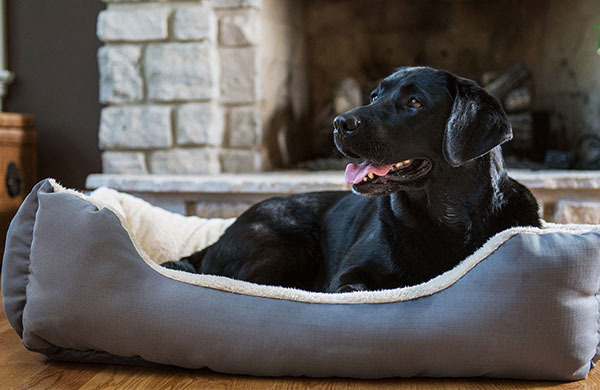
When it comes to comfort, what's inside the best dog beds can be just as important as the bed's size and shape. Read on to learn about the pros and cons of each type of fill, and find out which one is most suitable for your canine. Note: Some beds are filled with a combination of these materials.
Polyester Fibers
-
The basics: The most common and cost-efficient type of fill, it's soft, warm, and cushy, and it works well for younger dogs.
-
Support: Low to moderate
Cotton Batting
-
The basics: Frequently used in DIY beds or as a temporary filler, cotton batting is comparable to polyester fibers in its softness, warmth, and support.
-
Support: Low to moderate
Natural-Down Feathers
Solid Foam, Egg-Crate Foam, and Memory Foam
Cedar Chips
Water/Gel





























